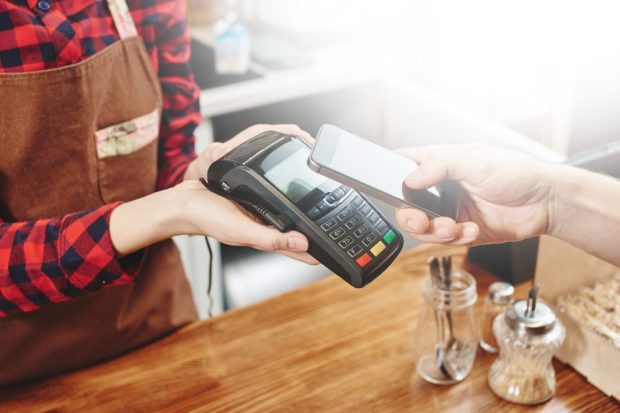Mobile Wallets Change What Consumers Use at Checkout, Not How They Pay

Will payments in the future be made using cash, card or mobile wallet? The answer might depend on whether consumers make the purchase in person, using a mobile device or via a computer, and whether the purchaser is buying a bag of spinach or a new pair of strappy sandals. PYMNTS’ research finds that situations often dictate the payment methods consumers use.
Consumers have access to more options than ever before and often do not make their purchases in person; eCommerce sales have grown 50% since 2018. It only follows that consumers’ relationships with their payment methods are shifting, and they may not feel as tied to credit and debit cards as they once did, opening the floodgates for mobile wallets.
Mobile wallets are experiencing steady growth, gaining happy shoppers and popularity as more venues, shops, markets and service providers across the country accept them. This change has the potential to transform the payments landscape over time.
“Quarterly Payments Report: Mobile Wallets Gain Ground,” an independently produced PYMNTS study, analyzes consumer experiences and sentiments about how they pay for the goods they purchase. We surveyed 2,597 U.S. consumers between March 9 and March 14 to better understand which payment methods consumers choose when purchasing retail and grocery goods and why they prefer particular methods in a given situation.
Free? Of course.
You've uncovered one of our premium articles. Register to keep reading and receive free unlimited access to all our premium content.
This is what we learned.
Consumers increased their use of mobile devices to buy groceries by 35% over the last year as store visits remained flat and computer use declined.
As of March, 82% of grocery and 61% of non-grocery retail purchases occurred in brick-and-mortar stores. These percentages have not changed significantly since December 2021.
Consumers increasingly use mobile devices instead of desktops, laptops or voice-activated devices to purchase groceries and other retail products. The share of non-grocery retail purchases made via mobile devices increased by 49%, and grocery purchases increased by 35% compared to December 2021. We find that consumers made 6.4% of grocery purchases via computers in March, down from 7% in December 2021. Additionally, consumers made 17% of non-grocery retail purchases via computers in March, dropping from 21% in December 2021.
Members of older generations use computers for purchases instead of mobile devices more than younger consumers do. Sixteen percent of baby boomers and seniors used their computers to buy retail products other than groceries, while just 12% of millennials and 4% of Generation Z consumers did the same. Just 8.3% of baby boomers and seniors used their mobile devices to shop for other retail purchases, while 24% of millennials did so.
Where consumers shop and what they buy influences which payment method they use. Consumers favor debit cards for groceries and credit cards for retail purchases.
When purchasing groceries, consumers tend to use their debit cards regardless of which channel they use to shop. We find that 43% of grocery shoppers overall and 43% of mobile device grocery shoppers chose to pay with their debit cards. The share is lower for consumers who shop for groceries on their computers, with just 36% using debit cards.
When consumers purchase non-grocery retail items, they tend to rely on their credit cards. Overall, 37% of consumers used credit cards to pay for non-grocery items. Among consumers shopping for non-grocery items online, 39% who shopped via a mobile device and 46% who shopped via a computer chose to pay with credit cards.
To reiterate: Consumers are more likely to pay for groceries with debit cards and retail purchases with credit cards. However, other payment methods — particularly digital wallets — are popular options, especially for purchases made via mobile devices or computers.
As more merchants accept mobile wallets, more consumers are using them. More consumers used Apple Pay when shopping via mobile, while the use of PayPal dipped for groceries and remained relatively steady for online retail purchases.
Our data shows that consumers used Apple Pay for 6.3% of grocery purchases made via mobile devices in March, up from 3.4% in September 2022. The use of Apple Pay for mobile-device non-grocery retail purchases exhibited similar growth: Consumers made 5.1% of these purchases using Apple Pay in March, up from 3.3% in September.
Meanwhile, the use of PayPal for grocery purchases on mobile devices declined. In March, 7.9% of consumers making grocery purchases on mobile devices used PayPal, down from 12% in September 2022 — a significant decline for just six months. However, the share of consumers using PayPal to pay for groceries when purchased via computer remained steady at just less than 7% from December 2022 until now.
Consumer use of PayPal via mobile devices for non-grocery retail purchases remained relatively steady. Our data shows that consumers used PayPal for 16% of these purchases in March — the same share as in September.
Conclusion
As consumers continue to see their payment options multiply, some consumers may adopt new methods, and we will likely see mobile wallet use continue to increase. In addition to creating more options for consumers and merchants, mobile wallets offer additional benefits that we should not overlook. Mobile wallets improve not only ease of payment but also accessibility, cost savings and security. While this payment method might not yet be a leading one, it is one to watch.
Methodology
“Quarterly Payments Report: Mobile Wallets Gain Ground,” an independently produced PYMNTS study, examines consumers’ experiences using different payment methods on various shopping channels. We surveyed 2,597 U.S. consumers between March 9 and March 14 about their experiences and perceptions. The sample was balanced to match the U.S. adult population in key demographic variables. Our respondents’ average age was 47, 51% identified as female and 37% annually earned more than $100,000.
